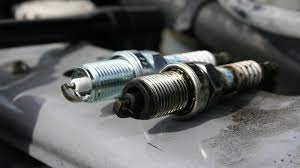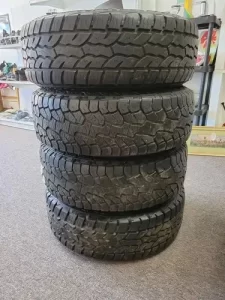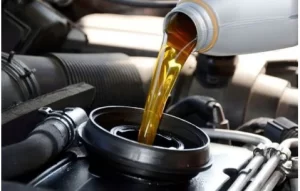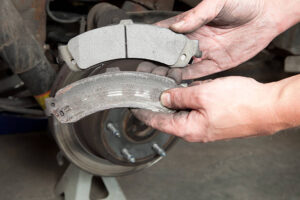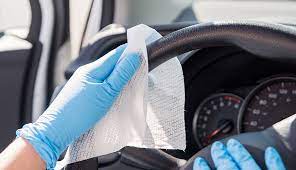
The modern car and truck are more technologically advanced than ever before.
However, not all vehicle maintenance needs you to be an expert in automotive mechanics or have a good knowledge of using various tools.
Anyone can handle even the simplest car maintenance tasks from their garage or driveway. These are just a few reasons to use the car care tips in this article:
- Your vehicles will be safer to drive
- Vehicles that are well maintained have greater reliability and a longer lifespan.
- You’ll reduce your carbon footprint
- Enjoy the satisfaction of car maintenance on your own.
- You’ll be able to save money on your car repairs
- Your vehicles will look better
These simple car care tips will help you protect your investment.
Many car and truck owners don’t pay enough attention to their vehicles until there is a problem.
Yes. We’ll take them into our auto shop for an oil change and other maintenance once or twice a year. Drivers can do more to make sure their cars run and look their best.
It’s a great way to protect the large investment you have made in your vehicle.
These seven maintenance tips for car care are simple and don’t take much time.
Inspect your battery
If your vehicle’s battery goes dead, it won’t move. So make sure to inspect and clean this critical component.
Check your battery terminals for dry white battery acid at least once per year. Remove any dry white battery acid from the terminals.
To clean the battery’s terminals, use a wire brush or corrosion removal fluid purchased from an automotive supply retailer. You can also use a mixture of baking soda water.
Clean the area with water and dry it with a towel. Then, reconnect the battery cables (attach first the positive cable).
Replace your windshield wiper blades
Clear windshields are essential for driving safety.
Replace worn windshield wiper blades as soon as possible. They can cause streaks, skip or fail to remove snow and rain from your windshield. If you hear the blades make a loud clicking sound, it is time to replace them.
Even if the wiper blades appear to be working well, you should inspect the rubber strips for cracking. Wipe the rubber strips with a damp cloth or paper towel to remove any debris.
As with many of these maintenance tips, weather and vehicle use will impact your schedule for replacing car parts.
It is recommended that you replace your wiper blades approximately every 6-12 months. Buy an additional pair of wiper blades next time you purchase a new pair.
The owner of most cars can change most windshield wiper blades. Follow the instructions on your owner’s manual or the back of the package for the wiper blades.
Replace the engine air filter
Changing your engine’s air filter is the most difficult of all the tips. It’s not difficult to do, but it is possible.
Dirty air filters can reduce the airflow your engine receives, which places additional strain on your engine. This can reduce gas mileage and, even more, accelerate your vehicles.
Several factors will determine how often an engine’s air filter needs to be changed. Air filters will clog faster if used frequently on unpaved roads or in heavy traffic.
Many different maintenance schedules can be used to change your air filter. Some suggest changing your air filter every 15,000mi (24,000 km), while others recommend changing it every 45,000mi (72,000 km).
Consult your vehicle’s owner manual to find out your engine’s location and determine your schedule. The air filter box can be accessed easily on most vehicles and may not require any tools.
An easy inspection of your air filter can tell you if it needs to be replaced. Gray or black will indicate a dirty filter.
Wash your car
It is simple to wash your cars regularly. This will help protect your vehicle’s exteriors and keep them looking new.
Although this is an easy task, it can be not easy. Some drivers don’t wash their truck or car enough, while others wash it too often.
Experts believe that the frequency of washing your car will depend on several factors.
- Where it is parked
- How often it is driven
- Weather conditions
It is good for vehicles to be washed every 2 weeks depending on the factors mentioned. If you live in an area that uses road salt in winter, it is a good idea to wash your car every other week because salt can cause damage to the vehicle’s underside.
It is always a good idea to park your car in a garage since it will keep your vehicles and trucks from being exposed to the elements. This includes acidic bird droppings and tree sap and dead bugs, and airborne elements such as dirt and pollen.
Wax your car
To maintain the exterior integrity and appearance of your vehicle’s exteriors, you can add this car care tip to your routine: give it a waxing.
Waxing is a more frequent task than washing. It should be done two to three times per year. According to some more expensive synthetic waxes, you may only need to use the wax once a year.
Waxing maintains the vehicle’s exterior beauty and protects the clear coat and paint against the above-mentioned harmful elements.
Apply a little water to your vehicle to see if it needs waxing. If the water beads up, waxing is not necessary.
These car care tips, which focus on the exteriors of your vehicle, can also improve your mileage. Tests have shown that clean cars are more fuel-efficient than those with poor exteriors.
Check your engine fluids
Even though your vehicle dashboard indicator will indicate low fluid levels, it is a good idea to check the fluid levels every so often between visits to your garage.
This is a quick and easy task that will ensure your vehicle’s fluids stay topped up. It’s a smart car care tip to check your fluid levels before you take your vehicle on a long trip.
When parked on a flat surface, make sure you check the fluid level. To wipe down your dipsticks, use a paper towel or a clean cloth.
Let’s begin with the engine oils. There will be varying opinions about how to measure your oil level accurately. Experts recommend that you run your vehicle until it reaches normal operating temperature, turn it off and wait between 5-10 minutes before checking the oil dipstick.
Some say that you can check the oil dipstick while the vehicle is still warm. Ask your mechanic to help you determine which method is best for your vehicle.
Some vehicles do not have a transmission oil dipstick. Check the level of your vehicle’s transmission fluid by running it. When checking the fluid tank level, it is important to turn off your vehicle.
The reservoir tank containing your brake fluid has easy-to-read fluid level indicators. You should also check the power steering fluid tank, which may contain a dipstick depending upon your vehicle model.
Last, check your windshield washer fluid. This fluid should be familiar to any experienced driver.
Check your tire pressure.
Modern vehicles have a tire pressure monitoring system. However, it is still advisable to check your tires manually. A good tire pressure gauge is essential for every driver.
Underinflated tires can cause you to:
- lower your fuel economy
- Overheating can cause tire damage and eventually lead to them blowing out.
- Limit the amount of weight your car can carry
You can also have problems if you overinflate your tires. Be sure to use the recommended pressure for your vehicle, not the one indicated on the tires.
Parking is now possible in your garage.
These car care tips, including visual inspections and hands-on maintenance, will ensure your vehicle runs smoothly.
Garage parking is a great way to keep your cars safe and dry. Garage Living will transform your garage into an attractive, clutter-free space.
We can also assist you if your car-care skills allow for more detailed maintenance. Our garage cabinets can be used as a workshop. The car lifts can be used for vehicle maintenance and additional garage parking space.



